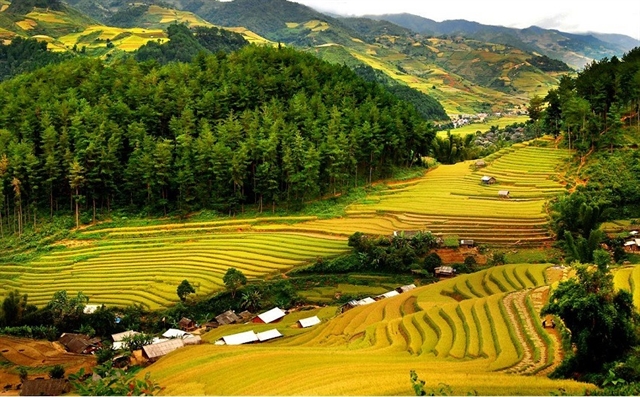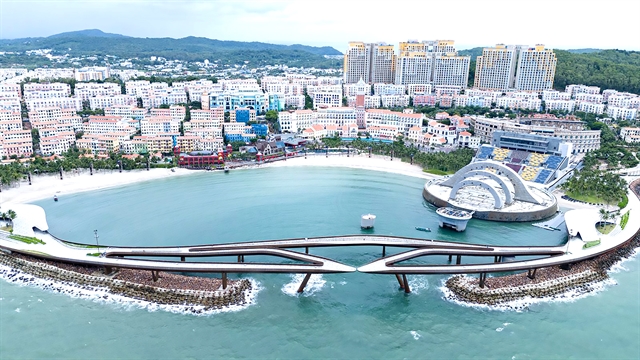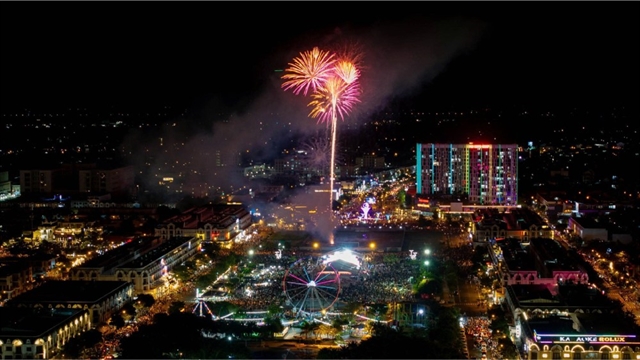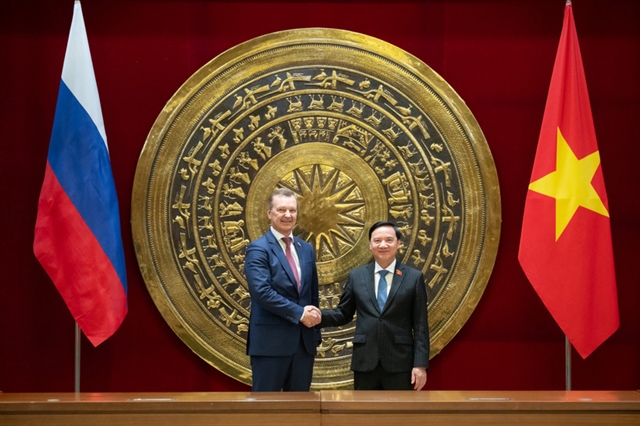 Life & Style
Life & Style


|
| Phú Quốc Island—an ideal destination for both domestic and international travellers -- featured stunning scenery, unique architecture, and iconic landmarks such as the Kiss Bridge and Sunset Town’s seaside square. Photo: dangcongsan.vn |
AN GIANG Authorities, experts and businesses in An Giang have called for stronger measures to develop tourism routes and signature products, aiming to harness the province’s diverse natural and cultural resources after its recent administrative merger.
The Mekong Delta province has seen remarkable growth in visitor numbers this year. In the first eight months of 2025, An Giang welcomed more than 18.2 million visitors, ranking third nationwide behind HCM City and Hà Nội.
In the first half of the year alone, it recorded about 14.2 million arrivals, including more than 908,000 international visitors, with tourism revenue exceeding VNĐ37.4 trillion.
With the addition of coastal and island attractions from the merged Kiên Giang area, such as Phú Quốc, Hà Tiên and Nam Du, An Giang now possesses a unique blend of mountains, plains, rivers and islands.
This geographical diversity allows the province to expand beyond traditional cultural and spiritual tourism to include seaside leisure and integrated packages.

|
| An Giang is a beloved destination for both domestic and international visitors. photo: laodong.vn |
Despite these advantages, delegates at a seminar on September 21 focused on developing tourism routes and products in An Giang pointed out a number of challenges. Tour itineraries remain fragmented, with weak links between localities and product types.
The province lacks truly distinctive products capable of establishing a strong brand in the domestic and international markets.
Human resources in tourism are another concern. While numbers have grown, the workforce still falls short of professionalism and digital competence.
Specialists stressed the need for personnel who are not only trained in service skills but also capable of designing products that reflect local culture and incorporate new technologies.
Local people working in services require additional training in foreign languages and soft skills to meet the rising expectations of visitors.
Concerns were also raised about sustainability. Rapid growth in arrivals has created pressure on the environment and cultural heritage. Without appropriate planning, the province risks the overexploitation of its assets, undermining its long-term appeal.
To address these issues, experts and businesses proposed a series of solutions. One priority is to develop signature products highlighting An Giang’s unique features.
Integrated tours combining mountains, rivers, islands and cultural sites could set the province apart from others in the region.
Examples such as the Trà Sư cajuput forest, Sam Mountain and floating markets were identified as destinations that could be better developed and connected to create richer experiences.
Another key recommendation is to strengthen linkages within the province and across the Mekong Delta. Suggested itineraries include Long Xuyên – Trà Sư – Sam Mountain – Châu Đốc – Búng Bình Thiên, with extensions connecting to Cần Thơ, Đồng Tháp and other provinces.
Cross-border tours with Cambodia and the wider Mekong sub-region are also seen as promising, given An Giang’s strategic location.
Delegates further emphasised the importance of digital transformation. Applying information technology, artificial intelligence and digital platforms in areas such as promotion, tour booking and customer services could help the province meet the demands of both domestic and foreign visitors.
At the same time, development must follow a green orientation, ensuring tourism growth does not come at the expense of environmental protection.
Community involvement was also underlined. Local residents are considered an integral part of the tourism chain, both as service providers and custodians of cultural heritage. Strengthening their role can ensure that growth goes hand in hand with cultural preservation and provides authentic experiences for visitors.
Human resource development was identified as another decisive factor. Close cooperation between provincial authorities, tourism enterprises and training institutions is needed to build a professional workforce. Training courses for guides and managers will be crucial in equipping them with cultural knowledge, communication skills and digital literacy.
Marketing and promotion efforts must also be enhanced. Delegates suggested that An Giang should leverage media channels and social networks to raise its profile, while fostering cooperation with neighbouring provinces and national agencies to extend its reach to international markets.
Participants agreed that the success of An Giang’s tourism will depend on turning these solutions into concrete action. Building coherent routes and distinctive products, creating a recognisable brand, ensuring sustainable practices, involving communities and investing in human capital are considered essential.
With its impressive visitor numbers and newly expanded natural assets, An Giang holds significant potential to become a leading destination in the Mekong Delta.
By capitalising on its strengths and addressing current shortcomings, the province aims to transform from a place of promise into a powerhouse of Vietnamese tourism. VNS




